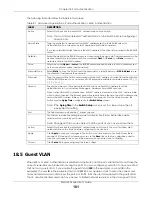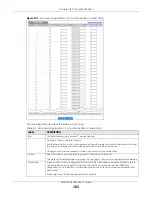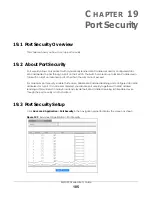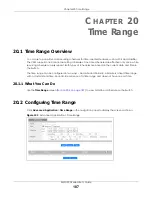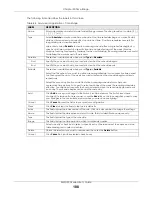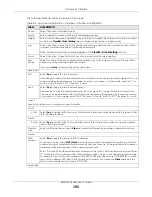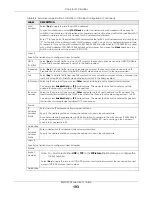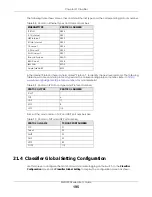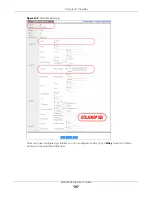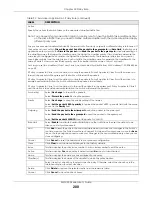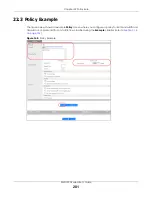
Chapter 21 Classifier
XMG1930 Series User’s Guide
189
C
HAPTER
21
Classifier
21.1 Classifier Overview
This chapter introduces and shows you how to configure the packet classifier on the Switch. It also
discusses Quality of Service (QoS) and classifier concepts as employed by the Switch.
21.1.1 What You Can Do
• Use the
Classifier
Status
screen (
) to view the classifiers configured on the
Switch and how many times the traffic matches the rules.
• Use the
Classifier
Configuration
screen (
) to define the classifiers and view a
summary of the classifier configuration. After you define the classifier, you can specify actions (or
policy) to act upon the traffic that matches the rules.
• Use the
Classifier
Global Setting
screen (
) to configure the match order and
enable logging on the Switch.
21.1.2 What You Need to Know
Quality of Service (QoS) refers to both a network's ability to deliver data with minimum delay, and the
networking methods used to control the use of bandwidth. Without QoS, all traffic data is equally likely
to be dropped when the network is congested. This can cause a reduction in network performance and
make the network inadequate for time-critical application such as video-on-demand.
A classifier groups traffic into data flows according to specific criteria such as the source address,
destination address, source port number, destination port number or incoming port number. For
example, you can configure a classifier to select traffic from the same protocol port (such as Telnet) to
form a flow.
Configure QoS on the Switch to group and prioritize application traffic and fine-tune network
performance. Setting up QoS involves two separate steps:
1
Configure classifiers to sort traffic into different flows.
2
Configure policy rules to define actions to be performed on a classified traffic flow (refer to
to configure policy rules).
21.2 Classifier Status
Use this screen to view the classifiers configured on the Switch and how many times the traffic matches







